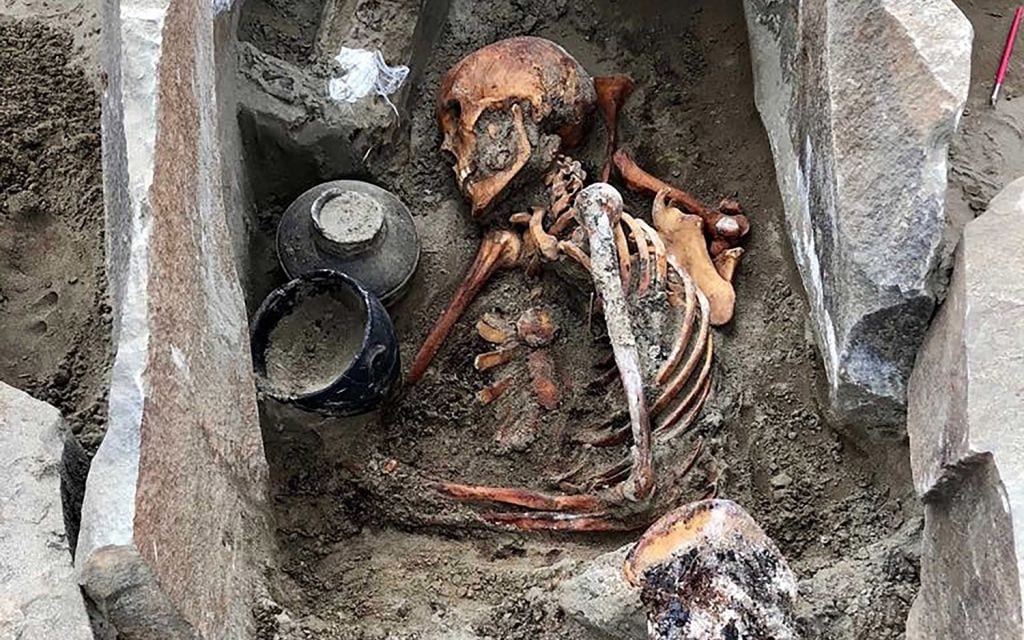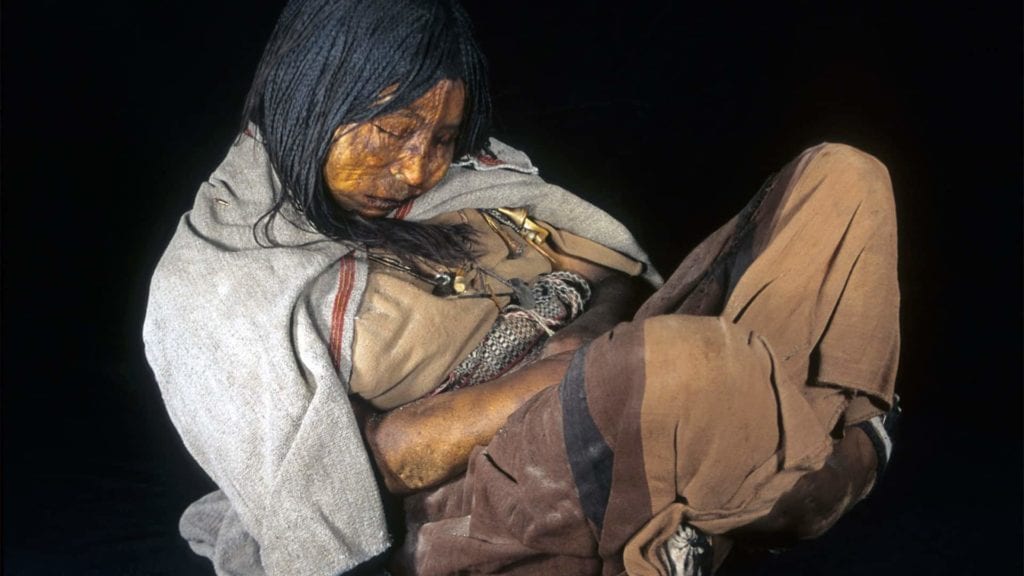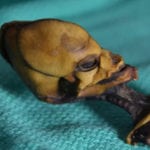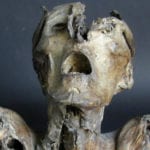 Creepy
Creepy  Creepy
Creepy  Movies and TV
Movies and TV 10 Movies That Get Elite Jobs Right, According to Experts
 Weird Stuff
Weird Stuff 10 Times Real Laws Were Based on Bizarre Hypotheticals
 Animals
Animals 10 Inspiring Tales of Horses Being Human
 Mysteries
Mysteries Top 10 Haunting Facts About the Ghost Ship MV Alta
 History
History 10 Surprising Stories About the Texas Rangers
 Humans
Humans 10 Philosophers Who Were Driven Mad by Their Own Theories
 Miscellaneous
Miscellaneous 10 Video-Game-Worthy Weapons and Armors from History
 Weird Stuff
Weird Stuff 10 Psychics Who Accurately Predicted Wartime Events
 The Arts
The Arts 10 Pieces of Art Inspired by a Broken Heart
 Creepy
Creepy 10 Death Superstitions That Will Give You the Creeps
 Movies and TV
Movies and TV 10 Movies That Get Elite Jobs Right, According to Experts
 Weird Stuff
Weird Stuff 10 Times Real Laws Were Based on Bizarre Hypotheticals
Who's Behind Listverse?

Jamie Frater
Head Editor
Jamie founded Listverse due to an insatiable desire to share fascinating, obscure, and bizarre facts. He has been a guest speaker on numerous national radio and television stations and is a five time published author.
More About Us Animals
Animals 10 Inspiring Tales of Horses Being Human
 Mysteries
Mysteries Top 10 Haunting Facts About the Ghost Ship MV Alta
 History
History 10 Surprising Stories About the Texas Rangers
 Humans
Humans 10 Philosophers Who Were Driven Mad by Their Own Theories
 Miscellaneous
Miscellaneous 10 Video-Game-Worthy Weapons and Armors from History
 Weird Stuff
Weird Stuff 10 Psychics Who Accurately Predicted Wartime Events
 The Arts
The Arts 10 Pieces of Art Inspired by a Broken Heart
Top 10 Naturally Mummified Bodies Found Across The World – 2020
While most people know of the ancient Egyptian practice of mummification, the process can occur naturally. It’s rare, but every so often, a corpse will lay in the right conditions, and many years later, they’re found.
These naturally-occurring mummies have revealed numerous details about the lives these people led, and they are often thousands of years old. These ten mummies were found throughout the world, and they all had a story to tell.
Top 10 Remarkable Moments Involving Mummies
10 “Sleeping Beauty”

In 2018, a young woman’s body was found beneath a Russian reservoir, and it is believed she had been resting there for 2,000 years. The woman, who archaeologists have since dubbed “Sleeping Beauty,” was found with several interesting items, and she was wearing a silk skirt.
She held a pouch of pine nuts, and because her tomb was made entirely of stone, parts of her body didn’t decompose. Instead, it was mummified, leaving much of her corpse and her belongings for researchers to find.
Several high-value items were found within the tomb, including a beaded belt, a gemstone buckle, a Chinese-style mirror, and a make-up box. The scientists who worked on the site speculated that she might have been a young “Hun woman” who was likely a noblewoman.
Her remains were found along Yenisei River’s shoreline after a hydroelectric dam upriver caused a significant drop in water level. Archaeologist Dr. Marina Kilunovskaya, from St Petersburg’s Institute of History of Material Culture, explained that “The lower part of the body was especially well preserved. This is not a classic mummy—in this case, the burial was tightly closed with a stone lid, enabling a process of natural mummification.”[1]
9 The Mummies Of Llullaillaco

Three children were found in a remarkably well-preserved mummified state atop the summit of Llullaillaco volcano in Argentina. The children have since been dubbed the “Maiden,” “Llullaillaco Boy,” and “Lightning Girl.” The Maiden was around 13-years-old while her companions were believed to be between four and five.
The children were the victims of human sacrifice and are around 500-years-old. What’s incredibly fascinating about these mummies is that evidence of their being drugged was found. This was done as part of a year-long series of ceremonies leading up to their sacrifice.
The discovery was made when scientists analyzed hair samples from the children. This revealed that they had been given coca leaves and beer. Additionally, their diet consisted of mostly vegetables, but shortly before their deaths, they ate the food of the elite.
The children’s bodies and clothing were incredibly well-preserved, thanks to the freezing temperatures and dry air found atop the mountain. While they aren’t the only Incan mummies found over the years, they are the most well-preserved.
This has helped archaeologists confirm historical accounts of human sacrifice by analyzing how the children were treated, how they died, and what they ate shortly before their deaths.[2][3]
8 The Inuit Baby Of Qilakitsoq
In the 1980’s six women, a two-year-old boy, and a baby boy, were found when two brothers were hiking near the abandoned Inuit settlement, Qilakitsoq. They were found entirely by accident when they found a stack of rocks.
While the bodies were all mummified, the baby was, by far, the most interesting of the bodies. When he was first unearthed, it was believed to be a doll, but a closer look revealed the body to be that of a small child of around six-months-old.
An analysis of the body revealed that the child was buried alive — likely due to his mother’s death, leaving no one who could care for him. The bodies were found in two separate graves, which consisted of the corpses stacked atop one another, separated by animal skins.
The two-year-old boy was found to have Down’s Syndrome and was likely left to die of exposure due to his condition. This was a common practice among the Inuit at the time, as resources couldn’t be spent on anyone incapable of contributing food, clothing, or shelter.[4]
7 Cashel Man
Bog bodies are corpses that have been discovered in peat bogs, which naturally mummify their bodies. The highly acidic water, low temperature, and minimal oxygen preserve bodies in various states. Some are skeletonized while others retain their skin and internal organs, though their bones are often partially dissolved.
Bog bodies have been found from a wide range of time periods across Europe, but the oldest one found to date is Cashel Man, who died around 4,000 years ago in 2000 B.C. The fleshed body showed signs of a violent demise, as his spine was shattered in two places, he had a broken arm, and was hit with an axe in his back several times.
Based on where he was found and the severity of his killing, Archaeologist Eamonn Kelly of the National Museum of Ireland believes that he was killed in the act of sacrifice. At the time of his death, it was common to sacrifice young men as a ritual connected with kingship.
Cashel Man was between 20 and 25-years old, and he was intentionally covered with peat following his death. He was found when a peat milling machine partially unearthed him in 2011 at Cashel bog.[5][6]
6 The Ice Maiden
Between 1450 and 1480, a young girl of 12 to 15 was sacrificed as an offering to the Incan gods. Her body was found in 1995 atop Mount Ampato in southern Peru, where she was preserved via the freezing temperatures and dry air.
The body was entirely frozen when she was found, which preserved her body and her garments. Her skin, tissues, organs, blood, hair, and stomach contents were all well-preserved. This made it possible to analyze her in such a way as to offer up a rare glimpse into Incan culture during her lifetime.
A scan revealed that she ate a meal of vegetables about six to eight hours before her death. She was wrapped in a burial tapestry, and her head was adorned with a cap made from the feathers of a red macaw. She was fully clothed, and her garments suggest that she was from the capital city of Cusco.
An analysis of the body indicated she was killed by blunt trauma to the head, which was the normal means of sacrificing children at the time. You can see the Ice Maiden (also called “Momia Juanita”) at the Catholic University of Santa María’s Museum of Andean Sanctuaries in Arequipa, Peru, where she’s been displayed since 1996.[7][8]
10 Intriguing Discoveries Found Inside Mummies
5 The Saltmen
Between 1993 and 2010, the remains of six men had been discovered in the Chehrabad salt mines of Iran. The men were killed when the mine shaft they were working in collapsed. Interestingly, the six men didn’t die at the same time. Three dated to sometime between 247 B.C. and 651 A.D. while the rest died sometime between 550 and 330 B.C.
The bodies were preserved, primarily due to the desiccating nature of the salt that entombed them. Their bodies were severely damaged by the collapses that killed them, but what remained was mummified and preserved. After testing the hair of a 1,700-year-old mummy, it was determined that one man had type B+ blood.
Another was found to have tapeworm eggs in his intestine. This suggests that the man ate raw or undercooked meat and is the oldest known evidence of an ancient intestinal parasite in Iran.
The bodies were found with three iron knives, a woolen half-trouser, a length of leather rope, pottery shards, a silver needle, a walnut, and a grindstone. The head and left shoe (with the leg inside) of Salt Man 1 is on display at the National Museum of Iran in Tehran.[9][10]
4 Spirit Cave Man
The oldest human mummy found in North America was discovered in 1949 in Spirit Cave outside of Fallon, Nevada. Spirit Cave Man is believed to have died around 7430 B.C., making him the oldest naturally mummified corpse ever found at around 9,400 years old.
The body was found within the cave by employees working for the Nevada State Parks Commission while surveying potential archaeological sites at risk to guano mining. The body was wrapped in tule matting and was wearing moccasins. Before his death, which was likely due to a skull fracture or abscessed teeth, he was wrapped in a rabbit-skin blanket.
When the body was discovered, it was mistakenly identified as being between 1,500 and 2,000 years old due to how well the remains were preserved. It was deposited at the Nevada State Museum’s storage facility in Caston City, where it remained for half-a-century.[11]
In 1997, the remains were analyzed using mass spectrometry, which indicated the body’s real age. By 2016, litigation resulted in the return of the remains to the Fallon Paiute-Shoshone Tribe, which was found to be the ancestral family of Spirit Cave Man. Once reclaimed, the tribe reburied them in line with its customs.[12]
3 Ginger
Mummification is often associated with ancient Egypt due to the advanced techniques developed by the civilization. That advancement took time, and before the process was fully developed, bodies were buried in such a way as to take advantage of the environment with the goal of preserving them.
A mummy found in 1896 is the first predynastic mummy found at Gebelein, Egypt. He is known as Gebelein Man, but due to the presence of red hair atop his head, he’s earned the nickname “Ginger.”
Ginger was between 18 and 21 at the time of his death (3351 to 3017 B.C.), which dates to the Late Predynastic period. His body was placed in the fetal position in a shallow grave, which kept it in contact with hot, dry sand. Sand in Egypt contains naturally occurring natron, allowing the absorption the body’s water, desiccating it.
This preserved him through natural mummification, though it’s possible he was buried in an effort to make this happen, as artificial mummification means were, as yet, undeveloped at the time.
An analysis of the body, which has been on display at the British Museum since 1900, indicated he had tattoos and was murdered. He was likely stabbed in the back by a flint or copper blade, measuring at least five inches in length.[13][14]
2 Tollund Man
When he was found in 1950, Tollund Man’s features were so well preserved, he was believed to be a recent murder victim. In reality, he lived during the 4th century B.C. in Scandinavia. He is one of the most well-preserved bog bodies ever found.
Tollund Man was found in the Bjældskovdal peat bog under six feet (2 meters) of peat. He was found in the fetal position and was wearing a pointed sheepskin and wool cap, which was fastened under his chin. He was also wearing a hide belt and thong, but most interesting was the noose made of animal hide drawn tightly around his neck.
While much of Tollund Man’s body showed signs of decay despite his mummification, his head was remarkably undamaged. His facial features are striking, as few mummies are ever preserved well enough to make them out in such detail.
Tollund Man’s final meal consisted of porridge made from seeds and grains. He ate between 12 and 24 hours before his death by hanging, likely done for sacrificial purposes. He is on display at the Silkeborg Museum in Denmark, though only his head is original. The body wasn’t preserved in the 1950s, so it has been reconstructed for the museum’s display.[15]
1 Ötzi
Ötzi “The Iceman” was found in the Ötzal Alps in 1991 and was dated between 3400 and 3100 B.C. Ötzi’s body has been preserved, thanks to the extreme cold, which helped scientists determine that he was likely murdered.
An arrowhead was found in his left shoulder, which would have proven fatal. Ötzi is the oldest natural human mummy ever found in Europe. Because he was so well preserved, he’s offered a great deal of insight into Chalcolithic Europe.
His stomach contents revealed the presence of ibex meat, which he likely dined on only hours before his death. His intestines revealed the presence of red deer, herb bread, and chamois meat. He also had a whipworm infestation and was sick months before his death.
Ötzi had 61 tattoos from head to foot at the time of his death. He was found with a cloak, coat, belt, leggings, a loincloth, and shoes — all made from different leathers. The complexity of the shoes, which were somewhat waterproof, suggests the existence of cobblers during the Copper Age.
Even more fascinating is Ötzi’a DNA, which revealed the existence of 19 genetic relatives via the presence of a rare mutation, G-L91. “The Iceman and those 19 share a common ancestor, who may have lived 10,000 to 12,000 years ago.”[16][17]
10 Facts About Ancient Egyptian Mummies You Didn’t Know








